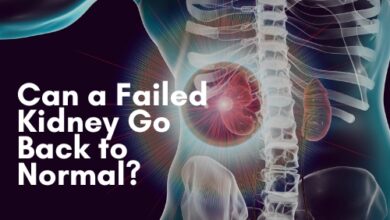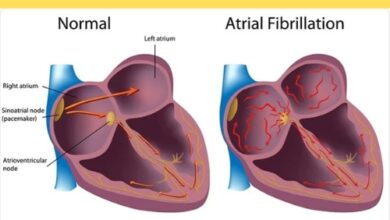Anxiety may signal early Parkinson’s disease in older adults, study suggests

According to a new study, the likelihood of receiving a Parkinson’s disease diagnosis is more than twice as high for adults over 50 who experience anxiety as for those who do not. The British Journal of General Practice published this research, which emphasises anxiety’s possible function as an early marker of Parkinson’s disease and calls for more research into the significance of this discovery for early diagnosis and treatment.
Due to longer life expectancies, Parkinson’s disease is expected to afflict over 14 million people worldwide by 2040, making it the second most common neurodegenerative ailment. Although early identification is essential for controlling the condition, it can be difficult to identify Parkinson’s early non-motor symptoms. It has been noted that Parkinson’s disease precedes anxiety in older persons, however the precise relationship between the two conditions is unknown.
Prior research suggested that individuals with anxiety had a higher chance of developing Parkinson’s disease, but it did not completely take lifestyle and socioeconomic position into consideration. By examining the relationship between newly diagnosed anxiety and a later Parkinson’s disease diagnosis while taking into account a number of confounding factors, this study sought to close these gaps.
The researchers used de-identified electronic health records from the Health Improvement Network (THIN) and other data from the IQVIA Medical Research Database. Information from more than 700 general practices in the UK is included in this database, which represents a wide range of patient demographics.
People between the ages of 50 and 99 who registered with participating practices between January 2008 and December 2018 were the study’s target population. Two sets of volunteers were created: those without anxiety and those who had just received an anxiety diagnosis. Based on age and gender, four controls were matched with each anxious person to form a dynamic cohort in which participants could move from the control group to the anxiety group if they subsequently experienced anxiety.
Using survival regression models, the researchers analysed the data and estimated the risk of developing Parkinson’s over time, controlling for relevant health conditions (severe mental illness, head trauma, dementia), age, sex, socioeconomic status, and lifestyle choices (smoking, alcohol consumption, body mass index). To examine correlations while taking these factors into consideration, the models were constructed step-by-step.
In the study, there were 324,670 men and 553,586 women without anxiety, and 38,510 men and 70,925 women who had experienced their first episode of anxiety. 331 members of the anxiety group received a Parkinson’s disease diagnosis during the follow-up period; the median time to diagnosis was 4.9 years.
In the anxiety group, the incidence of Parkinson’s disease was 1.02 per 1,000 person-years, while in the non-anxiety group, it was 0.49 per 1,000 person-years. The risk of Parkinson’s disease was found to be more than twice as high in individuals with anxiety (hazard ratio of 2.1) after controlling for confounding variables. The study also found that among people who experienced anxiety, a number of prodromal symptoms linked to Parkinson’s disease were present. These symptoms included difficulty sleeping, sadness, exhaustion, constipation, cognitive decline, and particular motor symptoms including stiffness and tremor.
“Anxiety is known to be a feature of the early stages of Parkinson’s disease, but prior to our study, the prospective risk of Parkinson’s in those over 50 with new-onset anxiety was unknown,” stated co-lead author Juan Bazo Avarez of University College London. We believe that by realising that anxiety and the aforementioned characteristics are associated with an increased risk of Parkinson’s disease after the age of 50, we may be able to identify the illness early and assist patients in receiving the necessary care.
Although the study offers insightful information, there are certain restrictions. Because of stigma or inadequate recording, electronic health records—which are mostly gathered for clinical purposes—may underreport mental health disorders, which is why the data was reliant on them. The true correlation between anxiety and Parkinson’s disease may be even higher than what has been noted due to this underreporting.
Furthermore, the study cohort was restricted to people 50 years of age and older, leaving out younger people who might have distinct risk profiles. The results might not apply to other groups, especially those living outside of the UK or in countries with distinct healthcare systems.
Future studies ought to investigate the degree of worry and how it affects the likelihood of developing Parkinson’s disease. Enhancing early identification and management techniques may result from a greater understanding of the precise pathways that connect anxiety to Parkinson’s disease. Furthermore, examining anxiety in conjunction with other prodromal symptoms may offer a more thorough comprehension of the early phases of the illness.
According to co-author Anette Schrag, “anxiety is not as well researched as other early indicators of Parkinson’s disease.” “More investigation is needed to determine the relationship between early anxiety episodes and other early symptoms as well as the underlying course of Parkinson’s disease in its early stages. This could result in more effective treatment of the illness when it first manifests.




